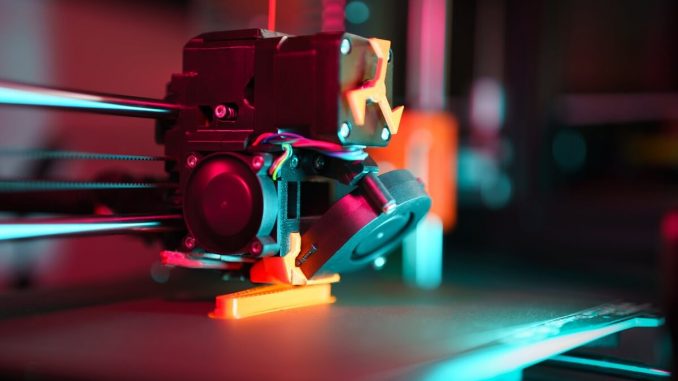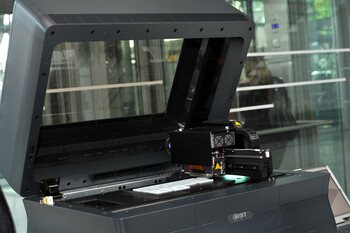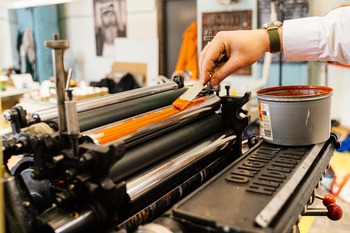
In the modern world of business and personal computing, a printer is an indispensable tool that translates digital information into tangible documents. The process of setting up a printer might seem straightforward, but ensuring a seamless and efficient operation involves a series of considerations. This comprehensive guide explores the intricacies of printer setup, providing step-by-step instructions, troubleshooting tips, and best practices to help users maximize the functionality of their printers.
Understanding Your Printer
- Types of Printers:
- Inkjet Printers: Ideal for high-quality photo printing and general document printing. Suitable for home and small office use.
- Laser Printers: Known for fast and efficient printing, laser printers are preferred for high-volume document printing in offices.
- All-in-One Printers: Combining printing, scanning, copying, and faxing capabilities, these printers offer versatility for various tasks.
- Wireless Printers: Allow printing from multiple devices over Wi-Fi, providing convenience and flexibility.
- Connection Options:

- USB Connection: Directly connecting the printer to a computer using a USB cable.
- Wireless Connection: Enabling wireless printing by connecting the printer to a Wi-Fi network.
- Network Connection: Connecting the printer to a network for shared printing in an office environment.
Step-by-Step Printer Setup
- Unboxing and Inspection:
- Carefully unbox the printer and inspect for any visible damage during transportation.
- Remove all packaging materials and ensure that no protective tapes are left inside the printer.
- Power and Connectivity:
- Connect the printer to a power source using the provided power cable.
- For USB connection, use the included USB cable to connect the printer to your computer.
- For wireless or network connection, follow the printer’s manual to connect to the Wi-Fi network or set up the network configuration.
- Ink or Toner Installation:
- If using an inkjet printer, insert the ink cartridges according to the manufacturer’s instructions.
- For laser printers, insert the toner cartridge carefully, ensuring it is securely placed.
- Paper Loading:
- Adjust the paper guides in the input tray to accommodate the size of the paper you will be using.
- Load the paper into the tray, ensuring it aligns with the guides and does not exceed the maximum capacity.
- Printer Software Installation:
- Insert the provided installation CD or download the latest drivers and software from the manufacturer’s website.
- Follow the on-screen instructions to install the necessary drivers and software on your computer.
- Printer Calibration (If Required):
- Some printers may require calibration to ensure accurate printing.
- Follow the calibration instructions provided in the printer manual or on the printer’s display screen.
- Test Printing:
- Print a test page to verify that the printer is functioning correctly.
- Check for any issues such as misalignment, color discrepancies, or print quality concerns.
- Wireless Printing Setup:
- For wireless printing, configure the printer to connect to your Wi-Fi network.
- Ensure that your computer and other devices are on the same network for seamless wireless printing.
- Mobile Printing Setup:
- If your printer supports mobile printing, install the manufacturer’s app on your smartphone or tablet.
- Follow the app instructions to connect your mobile device to the printer.
- Printer Sharing (Network Printers):
- For network printers in an office environment, configure sharing settings to allow multiple users to access the printer.
- Ensure that the necessary drivers are installed on each computer that will be using the network printer.
Troubleshooting Printer Setup Issues
- Connection Problems:
- Check cable connections for USB printers and ensure they are securely plugged in.
- For wireless printers, verify the Wi-Fi password and network connection settings.
- Restart the printer and computer if experiencing connectivity issues.
- Driver Issues:
- Update printer drivers regularly to ensure compatibility with your operating system.
- Check for driver updates on the manufacturer’s website and install the latest version if necessary.
- Print Quality Problems:
- If prints are of poor quality, check ink or toner levels and replace cartridges if needed.
- Run a printer maintenance utility to clean printheads or adjust laser printer settings for optimal quality.
- Paper Jams:
- Clear paper jams by following the printer’s manual or on-screen instructions.
- Ensure that the paper is loaded correctly and is within the recommended specifications.
- Slow Printing:
- Optimize print settings to reduce the file size and improve printing speed.
- Consider upgrading to a printer with faster printing capabilities for high-volume printing needs.
- Mobile Printing Issues:
- Ensure that your mobile device is connected to the same Wi-Fi network as the printer.
- Reinstall the mobile printing app if encountering connectivity problems.
Best Practices for Printer Maintenance
- Regular Cleaning:
- Clean the printer regularly to remove dust and debris that can affect print quality.
- Follow the manufacturer’s guidelines for cleaning specific components.
- Software Updates:
- Keep printer drivers and software up to date to benefit from performance improvements and bug fixes.
- Set up automatic updates when available.
- Ink and Toner Conservation:
- Use printer settings that optimize ink or toner consumption for draft prints.
- Adjust print quality settings based on the nature of the document.
- Proactive Troubleshooting:
- Address any issues promptly to prevent them from escalating.
- Consult the printer’s manual or online resources for troubleshooting guidance.
- Security Measures:
- Implement security features on network printers to prevent unauthorized access.
- Regularly update printer firmware to address security vulnerabilities.
- Scheduled Inspections:
- Conduct periodic inspections of the printer components, such as printheads or imaging units.
- Replace consumables according to the manufacturer’s recommendations.

Conclusion
Mastering the setup and maintenance of your printer is essential for smooth and efficient operations. By understanding the type of printer you have, following a systematic setup process, troubleshooting common issues, and adopting best practices for maintenance, you can ensure that your printer consistently delivers high-quality prints and remains a reliable tool in your home or office. Regular care and attention to your printer not only extend its lifespan but also contribute to the overall efficiency of your printing tasks, making it a valuable investment in your digital-to-physical document workflow.

Leave a Reply